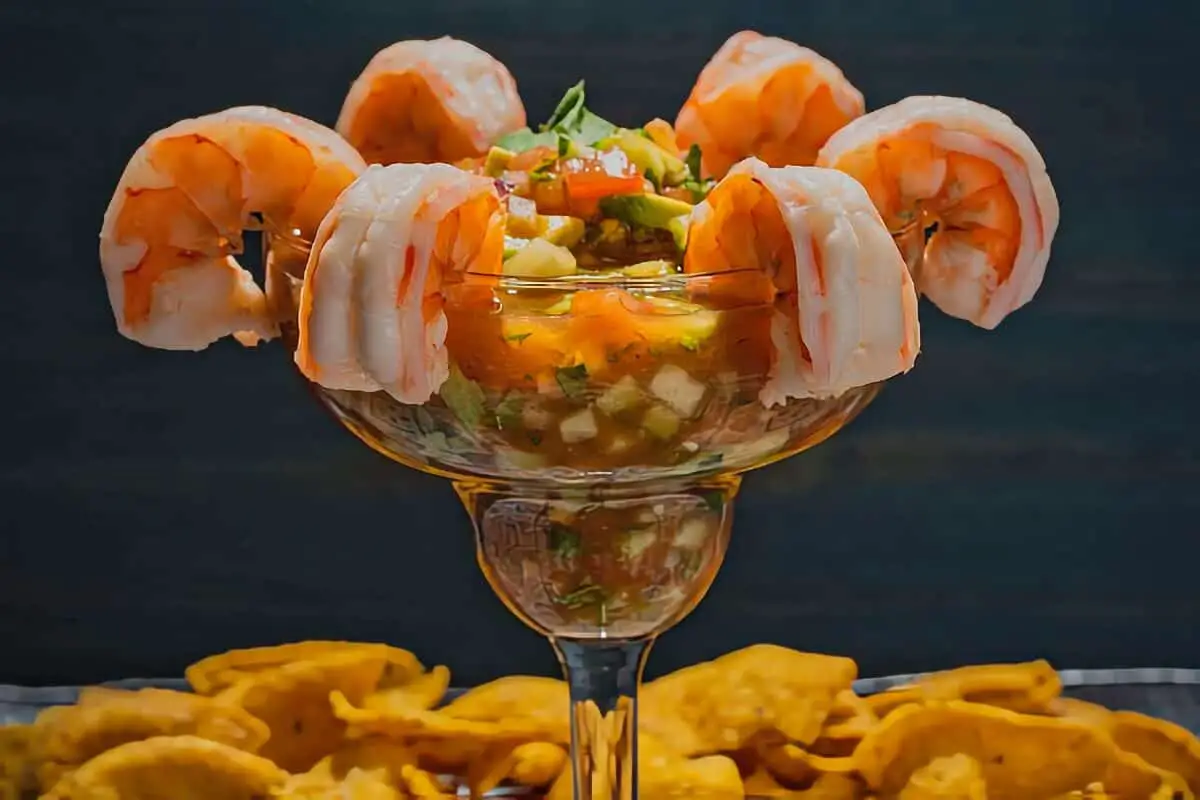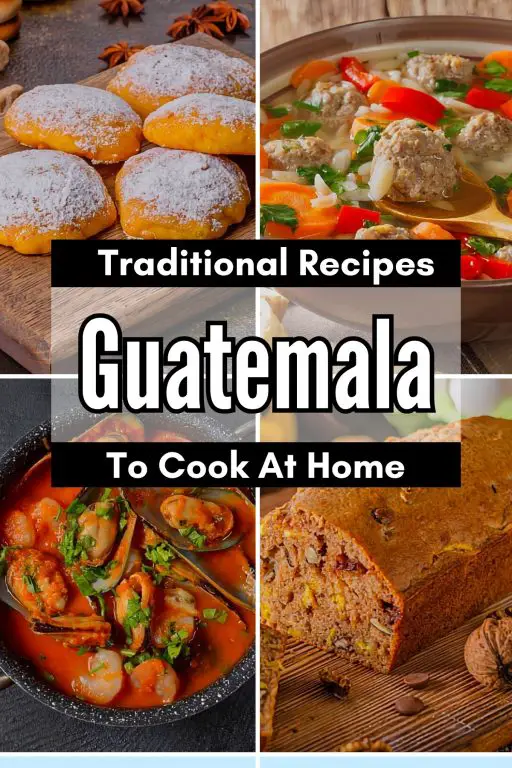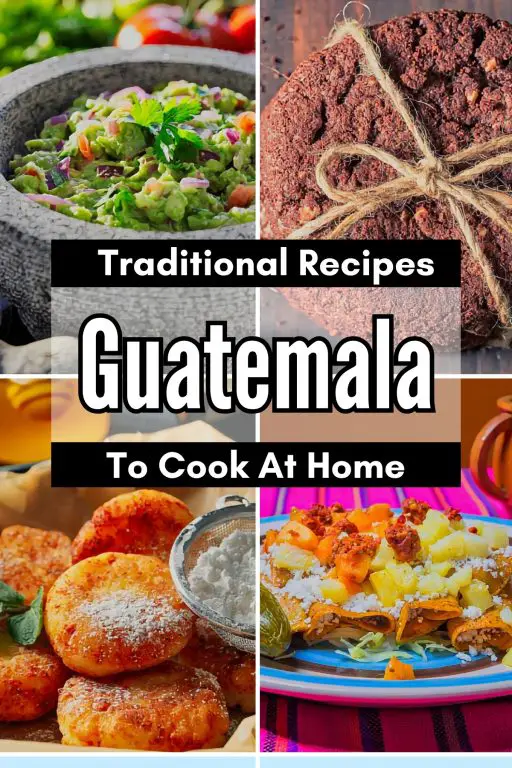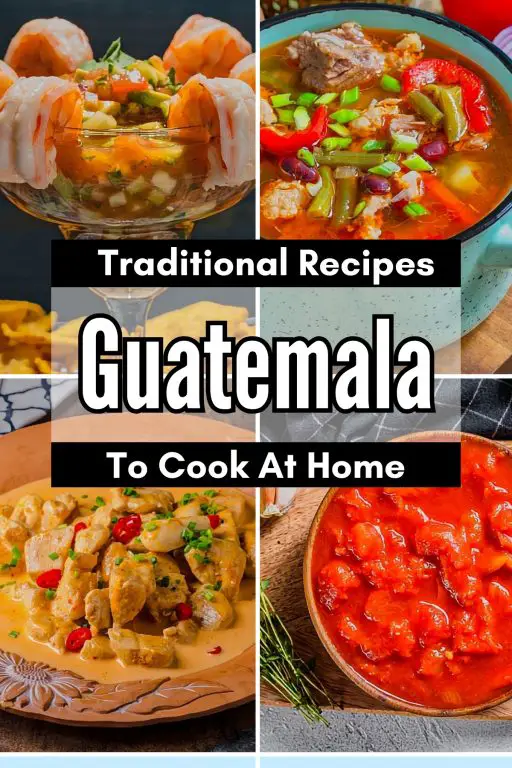I learned how to make Guatemalan Shrimp Ceviche de Camaron at a cooking class in Guatemala City. The capital of Guatemala is a city full of culture. The city has historical landmarks, markets, and parks that show its unique character. I had a great time hanging out in this vibrant place and trying traditional Guatemalan food.
In cooking class, we learned how to make shrimp ceviche, a dish from the Guatemalan coast. The recipe usually includes fresh shrimp soaked in lime juice along with diced tomatoes, avocado, cilantro, and onions. The teacher showed how to get each ingredient ready and mentioned that fresh shrimp is the best choice.
The first impressions of the Guatemalan Shrimp Ceviche de Camaron recipe were positive. The bright diced vegetables and shrimp created a nice-looking dish. While we were getting ready, we could smell the fresh lime juice and herbs. The basic ingredients brought out the natural tastes, making it a straightforward recipe that anyone can make.
When it was time to try the dish, it was light and refreshing. The shrimp was soft, and the lime juice was tangy. The tomatoes and onions gave a nice crunch, and the cilantro tasted really fresh. The creamy avocado added a different texture. Overall, eating the ceviche was enjoyable, and it’s clear why it’s so popular with the locals.
In Guatemala City, people really enjoy the Guatemalan Shrimp Ceviche de Camaron recipe at seafood restaurants and family get-togethers. It is often served as an appetizer or a light meal when the weather is warm. People in the area might change things up by adding different ingredients or spices based on what they like or what is common in their region.
After the cooking class, I went to local markets in Guatemala City. The markets offered fresh seafood, vegetables, and herbs for preparing Guatemalan Shrimp Ceviche de Camaron. Talking with vendors helped me understand Guatemalan food culture and how important fresh ingredients are in cooking.
Overall, my time in the cooking class in Guatemala City was both informative and fulfilling. I found out how to make a traditional dish and why it was important in the local culture. A well-liked dish is Guatemalan Shrimp Ceviche de Camaron. Whether you’re at home or in a restaurant, it’s a tasty and refreshing option for anyone who enjoys Guatemalan cuisine.
Ingredients For the Guatemalan Shrimp Ceviche de Camaron Recipe
Shrimp Peeled and Deveined
Lime Juice
Finely Chopped Red Onion
Finely Chopped Bell Peppers
Finely Chopped Tomato
Chopped Cilantro
Finely Chopped Serrano Peppers Seeds and Membranes Removed
Minced Garlic Cloves
Salt
Pepper
Olive Oil
Cooking Instructions For the Guatemalan Shrimp Ceviche de Camaron Recipe
Prepare the shrimp – Rinse the shrimp under cold water. Peel and devein the shrimp. Pat the shrimp dry with paper towels.
Marinate the shrimp – In a large bowl, combine the shrimp and lime juice. Ensure that the shrimp is fully submerged in the lime juice. Cover the bowl and refrigerate for 20-30 minutes. Stir occasionally to ensure even marination.
Chop the vegetables – Finely chop the red onion. Finely chop the bell peppers (red and green.) Remove the seeds from the tomato and finely chop it. Chop the fresh cilantro. Finely chop the jalapeño or Serrano chili peppers, removing the seeds and membranes.
Mince the garlic.
Combine the ingredients – Once the shrimp has marinated, remove it from the refrigerator. Drain the excess lime juice from the shrimp. Add the marinated shrimp to a large bowl. Add the chopped red onion, bell peppers, tomato, cilantro, jalapeño or Serrano peppers, and garlic to the bowl. Season with salt and pepper to taste. Gently toss all the ingredients together until well combined.
Chill the ceviche – Cover the bowl with plastic wrap or a lid. Place the ceviche in the refrigerator to chill for at least 30 minutes. This allows the flavors to meld together and enhances the taste.
Serve and garnish – Once chilled, remove the ceviche from the refrigerator. Give it a final toss before serving. Serve the Guatemalan Shrimp Ceviche de Camaron in individual bowls or on tostadas. Garnish with additional fresh cilantro, if desired. Serve immediately and enjoy!
Most Popular Spices Used by Guatemalan Locals
Guatemalan cuisine is known for its balanced and flavorful use of spices, combining native ingredients with those introduced by Spanish settlers to create a rich tapestry of taste. One of the most prominent spices in Guatemalan cooking is Qchiote (annatto), which adds a mild peppery flavor and vibrant red hue to various dishes. Often ground into a paste, achiote is used in stews, tamales, and rice, infusing the food with an earthy flavor that complements other ingredients. Its coloring properties also enhance the visual appeal of traditional recipes, making it a versatile favorite among locals.
Another essential spice is Pepitoria, or ground pumpkin seeds. Unique to Guatemalan and neighboring Central American cuisines, pepitoria is often used to thicken sauces and add depth to stews, especially in dishes like pepian, where it contributes a subtle nutty flavor. Combined with roasted tomatoes, chilies, and other spices, pepitoria adds a distinctive richness that embodies the essence of Guatemalan cooking. This practice of using seeds as a seasoning reflects ancient Mayan cooking traditions, which continue to influence modern Guatemalan flavors.
Cinnamon is also widely used, particularly in sweet and savory dishes that highlight Guatemalan cuisine’s Spanish influence. Known locally as canela, cinnamon is a common ingredient in mole sauces, as well as in desserts and beverages like atol de elote (a corn-based drink). Its warm, aromatic flavor adds complexity to various recipes, bridging the flavors of local ingredients with a Spanish touch. Often paired with other spices, cinnamon is essential in creating the nuanced flavors found in Guatemalan comfort foods.
Allspice is another popular spice in Guatemala, bringing a warm, slightly peppery note to savory dishes and marinades. This spice, derived from the dried berries of the pimento tree, is known as *pimienta gorda* in Guatemala and is commonly used in soups, stews, and meats. Its subtle complexity enhances dishes without overpowering them, offering a rounded flavor profile that highlights the country’s love for balanced seasoning.
Chili Peppers such as cobán and guajillo varieties are staples for adding heat and depth. Though Guatemalan cuisine is not typically very spicy, the addition of these chilies gives dishes a gentle warmth and smokiness. Ground or used whole, these chilies appear in everything from salsas to stews, like the renowned kak’ik, a spicy turkey soup from the highlands. Together, these spices — achiote, pepitoria, cinnamon, allspice, and chili peppers — define the flavors of Guatemalan food, infusing it with tradition and the unique balance of local and global influences.
Eating Healthy in Guatemala
Eating healthy in Guatemala is achievable, thanks to the country’s abundant fresh produce, local markets, and traditional cooking methods that prioritize natural ingredients. Guatemala’s varied landscape, which includes fertile highlands and tropical lowlands, allows for a diverse range of fruits, vegetables, and grains. Staples like black beans, corn, and rice form the base of many dishes and offer a nutritious source of protein, fiber, and essential vitamins. Black beans, in particular, are a common ingredient in Guatemalan meals, providing protein and fiber without saturated fats, making them a great choice for a balanced diet. Paired with corn tortillas — a daily staple rich in fiber and antioxidants — these ingredients are satisfying and help maintain energy levels throughout the day.
One of the most beneficial aspects of Guatemalan cuisine is its emphasis on fresh vegetables and fruits. Local markets, or mercados, are filled with seasonal produce such as tomatoes, avocados, carrots, and leafy greens. Vegetables are often incorporated into traditional dishes like caldo de res, a hearty beef soup loaded with nutrient-dense vegetables, or jocon, a chicken stew made with tomatillos and cilantro. The vibrant colors in these dishes reflect the high vitamin and antioxidant content that supports overall health, making it easy to get essential nutrients through regular meals.
In addition to vegetables, tropical fruits such as papaya, mango, and bananas are commonly available, offering essential vitamins like vitamin C and potassium. These fruits are often enjoyed fresh, juiced, or as a light snack, providing natural sugars and hydration in the country’s warmer regions. The emphasis on fresh, whole foods is also reflected in Guatemalan drinks, where fruit-based beverages and traditional teas are common, reducing the need for processed, sugar-laden options.
Guatemalan cooking methods also support a healthier diet. Many dishes are simmered, boiled, or lightly sautéed rather than fried, preserving the nutritional value of ingredients without adding unnecessary fats. Traditional stews, like pepian and hilachas, are slow-cooked with minimal oil, allowing spices, herbs, and vegetables to enhance the flavor naturally. This approach not only brings out the authentic flavors of the ingredients but also aligns with the principles of healthy eating by reducing added fats and sugars.
Overall, Guatemala’s local markets, traditional foods, and natural cooking techniques make it easy to eat healthily. Embracing these customs allows individuals to enjoy a balanced, nutrient-rich diet rooted in fresh, wholesome ingredients, supporting wellness and long-term health.
FAQ For the Guatemalan Shrimp Ceviche de Camaron Recipe
Q: What are the key ingredients in the Guatemalan Shrimp Ceviche de Camaron recipe?
A: The Guatemalan Shrimp Ceviche de Camaron recipe features fresh shrimp as the main ingredient, which is typically cooked by marinating in lime juice. This citrus marinade causes the shrimp to ‘cook’ in the acid, creating a tender and flavorful dish. Additional ingredients include diced tomatoes, onions, cilantro, and chili peppers, which enhance the freshness and add a hint of spice. Together, these components create a vibrant and refreshing ceviche that is perfect for warm weather or as a light appetizer.
Q: How do you prepare the shrimp for the Guatemalan Shrimp Ceviche de Camaron recipe?
A: To prepare the shrimp for the Guatemalan Shrimp Ceviche de Camaron recipe, start with raw, high-quality shrimp that has been cleaned and deveined. The shrimp should be cut into small pieces before being marinated in freshly squeezed lime juice, which helps to ‘cook’ the shrimp and infuse it with flavor. This process usually takes about 30 minutes, after which the shrimp will have turned opaque, indicating that they are ready to be mixed with the other fresh ingredients for the ceviche.
Q: Is the Guatemalan Shrimp Ceviche de Camaron recipe served cold?
A: Yes, the Guatemalan Shrimp Ceviche de Camaron recipe is traditionally served cold, making it an ideal dish for warm weather or outdoor gatherings. After marinating the shrimp, it is typically mixed with other fresh ingredients like diced avocado, tomato, and cilantro, then chilled in the refrigerator for a short period. Serving it cold not only enhances the flavors but also provides a refreshing experience, perfect for enjoying on a hot day or as a light appetizer.
Q: Can the Guatemalan Shrimp Ceviche de Camaron recipe be made in advance?
A: Yes, the Guatemalan Shrimp Ceviche de Camaron recipe can be made in advance, although it is best to prepare it a few hours before serving to maintain the freshness of the ingredients. After marinating the shrimp and mixing in the other ingredients, you can store the ceviche in an airtight container in the refrigerator. However, it is recommended to serve the ceviche within a day or two to ensure the shrimp remains fresh and the vegetables retain their crispness.
Q: What are some common serving suggestions for the Guatemalan Shrimp Ceviche de Camaron recipe?
A: The Guatemalan Shrimp Ceviche de Camaron recipe can be served in various ways to enhance the dining experience. It is commonly enjoyed with crispy tortilla chips for dipping or on top of tostadas for added crunch. Additionally, serving it with avocado slices or a side of fresh lime wedges can elevate the flavors. Pairing the ceviche with a light beer or refreshing cocktail can also complement its zesty taste, making it a delightful dish for gatherings or summer parties.

Guatemalan Shrimp Ceviche de Camaron Recipe
Ingredients
- 2 pounds shrimp peeled and deveined
- 1 cup lime juice
- 1 cup onion red finely chopped
- 1 cup bell pepper finely chopped
- 1 cup tomato finely chopped tomato seeds removed
- ½ cup cilantro chopped
- 2 Serrano peppers finely chopped (seeds and membranes removed
- 3 garlic cloves minced
- Salt and pepper to taste
- 2 tablespoons Oil olive oil
Equipment
- Large mixing bowl: Used to marinate the shrimp and combine the ingredients.
- Cutting board and knife For chopping vegetables and other ingredients.
- Plastic wrap or lid To cover the bowl during chilling.
- bowls or tostadas For the finished ceviche.
- Tongs or utensils To toss and serve the ceviche.
- Paper towels To pat dry the shrimp.
- Citrus juicer To extract juice from the limes.
Instructions
- a. Rinse the shrimp under cold water.
- b. Peel and devein the shrimp.
- c. Pat the shrimp dry with paper towels.
- a. In a large bowl, combine the shrimp and lime juice.
- b. Ensure that the shrimp is fully submerged in the lime juice.
- c. Cover the bowl and refrigerate for 20-30 minutes.
- d. Stir occasionally to ensure even marination.
- a. Finely chop the red onion.
- b. Finely chop the bell peppers (red and green.
- c. Remove the seeds from the tomato and finely chop it.
- d. Chop the fresh cilantro.
- e. Finely chop the jalapeño or Serrano chili peppers, removing the seeds and membranes.
- f. Mince the garlic.
- a. Once the shrimp has marinated, remove it from the refrigerator.
- b. Drain the excess lime juice from the shrimp.
- c. Add the marinated shrimp to a large bowl.
- d. Add the chopped red onion, bell peppers, tomato, cilantro, jalapeño or Serrano peppers, and garlic to the bowl.
- e. Season with salt and pepper to taste.
- f. Gently toss all the ingredients together until well combined.
- a. Cover the bowl with plastic wrap or a lid.
- b. Place the ceviche in the refrigerator to chill for at least 30 minutes.
- c. This allows the flavors to meld together and enhances the taste.
- a. Once chilled, remove the ceviche from the refrigerator.
- b. Give it a final toss before serving.
- c. Serve the Guatemalan Shrimp Ceviche de Camaron in individual bowls or on tostadas.
- d. Garnish with additional fresh cilantro, if desired.
- e. Serve immediately and enjoy!





4 comments
Fresh and citrusy, this ceviche was perfect for a light, refreshing bite.
I cant believe they didnt mention the secret ingredient for the best Guatemalan Shrimp Ceviche de Camaron! Its all about that unexpected twist that takes it to the next level. Whos with me on this culinary adventure? 🍤🌶️
I cant believe they didnt mention the secret ingredient for the best Guatemalan shrimp ceviche! Its all about that extra kick that makes it unforgettable. Trust me, you wont want to miss out on this tip!
I personally think adding pineapple to the Guatemalan Shrimp Ceviche de Camaron recipe would give it a unique twist. Whos up for trying this unconventional combination next time they make it?